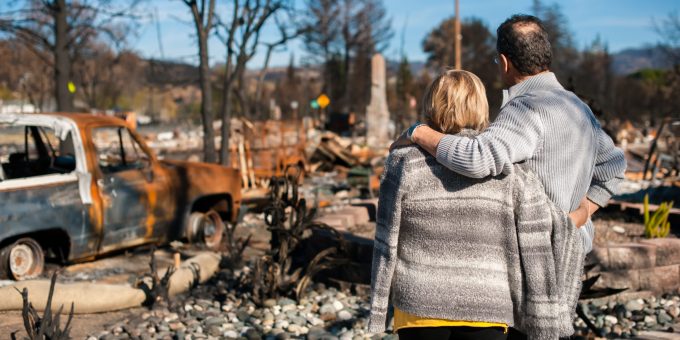
Affected areas can see out-migration for over a year following rare, highly destructive wildfires. iStockPhoto // VladTeodor
fire flight
In January 2025, wildfires tore through Los Angeles County, reducing entire communities to ashes and displacing tens of thousands of residents. While the immediate impacts on city infrastructure and displaced residents are well-documented, a research study in Nature Communications highlights a less recognized consequence of wildfires like these: their growing influence on migration patterns across the United States.
To understand how wildfires affect migration, an interdisciplinary team of researchers led by sociologist Kathryn McConnell analyzed the top 10% of the most destructive U.S. wildfires from 1999 to 2019. They found that while most wildfires do not significantly alter migration patterns, rare, highly destructive wildfires do. With structure loss serving as the key indicator of devastation, out-migration appears to increase for at least a year following severe events in which more than 250 structures are destroyed. Somewhat surprisingly, though, the study found little evidence that wildfires deterred in-migration to affected regions.Having destroyed over 10,000 structures, the 2025 Los Angeles fires now stand as the costliest wildfire event in U.S. history. As climate change accelerates the rate and intensity of destructive fires, residents and communities increasingly face the wrenching choice between rebuilding and relocating. This study suggests that for many, relocation may become the more likely outcome, underscoring the urgent need for policies that address housing, recovery, and climate adaptation in vulnerable areas in an integrated way.
